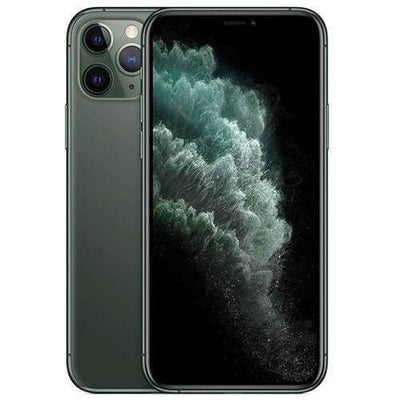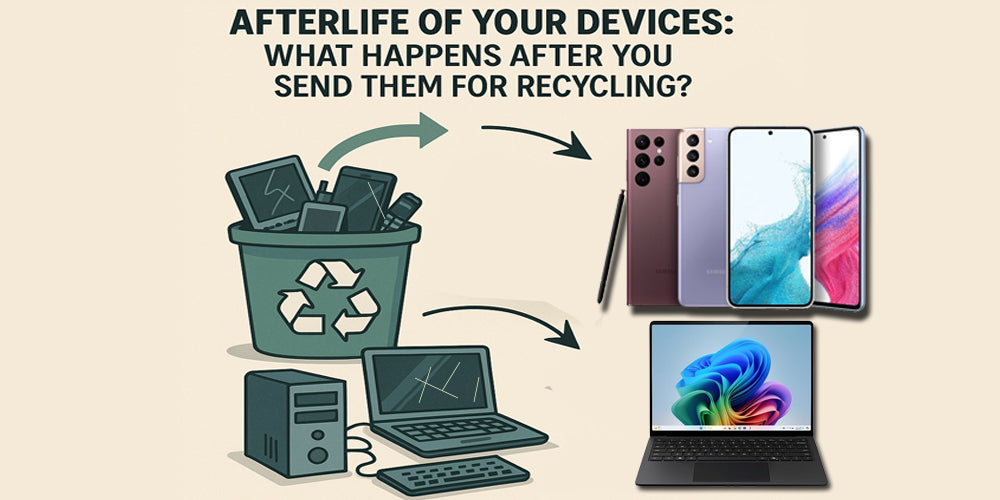Introduction
In the contemporary fast-paced world, we tend toward re-equipped an assortment of new models of smartphones, laptops, and other gadgets. But have you really ever thought about what was being done with the e-wastes after recycling? The afterlife of your devices is a very complicated and interesting affair- it is more so if we consider amid the throwaway culture. Down the recycling bin or on delivery at the recycling center, from your old electronics sets, a journey begins that can help in saving the planet alongside recovering valuable materials. This blog unravels the afterlife of your devices and gives you insight into the processing and repurposing of e-waste after recycling towards a sustainable future. Choosing services like Fonezone helps protect the environment while contributing to the circular economy. With Fonezone, your old tech gets a new life.
Understanding the Afterlife of Your Devices
The afterlives of your devices begin when you submit them to a certified recycling center. According to most accounts, these gadgets were thrown away, but contrary to popular opinion, they are processed through a rather thorough dismantling process. These centers specialize in handling e-waste after recycling, ensuring that hazardous elements are dealt with safely while useful materials are put to reuse. Devices are first sorted by type-phone, computer, appliances, etc.-before the afterlife of your devices begins with dismantling and separation. These processes are mooted to reduce harm to the environment and retrieve valuable resources from e-waste after recycling.
Dismantling and Sorting: The First Step in the Afterlife
Once collected, your devices enter the afterlife stage of destruction. Here, expert technicians or machines dismantle each gadget. Batteries, circuit boards, screens, and plastics are separated for different streams of processing. During this stage in afterlife treatments, the e-waste is treated in an environmentally friendly manner so that no pollution results and is assured of safety. The proper sorting process is of utmost importance in deciding which parts of your device afterlife can be reused and which parts need to be disposed of safely. With the ever-growing list of gadgets entering the recycling stream, proper environmental management of electronic waste after recycling becomes all the more important. Whether it’s a working smartphone or a broken tablet, Fonezone categorizes every item for its best reuse or recycling option. Through this method, Fonezone reduces waste and increases resource recovery in an eco-friendly manner.
Material Recovery: Giving Old Parts New Life
The recovery of materials is one of the most important aspects of the afterlife of your devices. Post-dismantling, metals like copper, gold, aluminum, and rare-earth metals are extracted from the components. These recovered materials are then delivered to manufacturers who use them to fabricate new products. The afterlife of your devices thus becomes a cycle: old technology being reborn into new gadgets. Managing e-waste after recycling in a responsible manner heavily depends on efficient recovery methods; these methods curb the need for extraction of virgin materials and limit pollution. In keeping with the increasing global production of electronic waste after recycling, material recovery is key to establishing a circular economy.
-
Old devices are dismantled to extract useful components like copper and aluminum.
-
Valuable materials are recovered and sent to manufacturers for reuse.
-
Reduces the need for mining raw resources, conserving energy and nature.
-
Supports a circular economy, where old electronics contribute to making new products.
-
Minimizes electronic waste, making recycling more sustainable and efficient.
Safe Disposal of Toxic Elements
Uranium, mercury, lead, and cadmium are just some of the toxic substances that may be found in your electronic appliance. Appropriate handling involves treating these toxic elements to avoid the toxic release from polluting the environment, which forms part of your devices' afterlife. The certified recyclers are equipped with sealed containers to ensure all laws are strictly adhered to, including the absolutely safe disposal of hazardous wastes. Thus, the disposal of hazardous wastes by certified recyclers ensures that electronic waste does not end up polluting the soil or water after recycling. Other procedures that encompass the afterlife of your devices include training the staff to identify and separate hazardous materials. Proper disposal of electronic waste after recycling keeps our people and ecosystems free from toxic exposure.
Refurbishment: A Second Chance for Devices
Not all devices being recycled are beyond repair. Through refurbishment, at least part of an electronic device's life can be extended if it's still functioning. Skilled technicians carry out repairs or upgrades to working components and then resell or donate the device. This particular aspect of electronic waste management after recycling reduces the amount of waste while providing low-cost items for those in need. When an afterlife includes refurbishment, it extends the lifespan of the product and, therefore, its value. Supporting this element of electronic waste after recycling also enhances social equity through bridging the digital divide.
The Global Journey of Recycled Electronics
Sometimes, the afterlife of your devices doesn't have to be local. Recycled electronics or parts are shipped to foreign countries where they are processed or reused. These international movements constitute one of the most critical phases in the life cycle of e-waste after recycling. However, such activities need to be regulated to ensure fair trade and environmental safety. Thus, the components are shipped back to other parts of the world, extending the long production cycle of goods. To uphold ethical recycling standards, the dumping of electronic waste after recycling should be prevented in developing countries.
The Role of Consumers in Responsible Recycling
However, the afterlife of your devices lies mostly in your hands: what you do with your outdated gadgets. Choosing certified recycling centers and not a landfill is your small act in the big endeavor of managing electronic waste after recycling. Knowing the proper steps like backing up your data, wiping your device, and checking recycling policies might make a huge difference. The afterlife of your devices is a story that begins with you and may work with or against the environment. Educating others about electronic waste after recycling will certainly help with cultivating similar behavior and outcomes for the planet.
-
Choose certified recycling centers to ensure safe and legal disposal of e-waste.
-
Avoid throwing electronics in regular trash to prevent environmental harm.
-
Back up and wipe personal data before recycling old devices.
-
Learn about local recycling policies and drop-off programs for proper disposal.
-
Spread awareness among family and friends about responsible e-waste practices.
-
Buy eco-friendly and easily recyclable devices when possible.
-
Participate in take-back programs offered by manufacturers and retailers.
-
Reduce frequent upgrades and extend the life of your devices through repair and reuse.
Government and Industry Responsibilities
A huge role is played by governments and electronics corporations in the afterlife of your devices. Policies, incentives, and extended producer responsibility programs are all along the lines that manufacturers have to take back their products at the end-of-life stage. This way of doing things improves after electronic waste management-from-recycling processes and serves to improve recycling rates. The afterlife of your devices would really have been better if manufacturers made it easy for their products to be taken apart for recycling from the beginning. Through the growing regulation of electronic waste management after recycling, structured recycling industries would set in, benefiting everyone.
The Future of Recycling: Smarter and Greener
Evolving technology and afterlife of your devices go hand in hand. Improvement in the management of electronic waste after recycling is brought about by advanced recycling techniques such as AI-based sorting, robotic dismantling, and chemical recycling. These techniques bring about improved recovery rates, less dependence on human input, and safer working conditions. Another factor that will shape the future of the afterlife of your devices will be the products themselves in terms of ease of recycling and lesser use of toxics. Smarter and advanced electronic waste post-recycling will nurture a greater resource base and cleaner environment for the future.
Conclusion
In the event of any disposal of electronic gadgets, each wrong choice can ultimately promote sustainability, cause pollution, or allow the reuse of precious materials. From dismantling to material recovery, refurbishment, and disposal, there is a beneficial contribution made at every step of the process on an afterlife of e-waste recycling. Being a responsible consumer goes a long way, but there must also be commitment from the concerned governments and manufacturers. Understanding the afterlife of your devices enables you to choose the better pathway for saving the planet. It is time to support a circular economy which gives our devices another life via e-waste after recycling.
FAQs About the Afterlife of Your Devices
Q.1. What happens first when I recycle a device?
Your device is dismantled, and components are separated for reuse or disposal.
Q.2. Can all parts of a device be recycled?
Not all, but many parts like metals and plastics are recoverable; some hazardous elements are safely disposed of.
Q.3. Are refurbished devices part of recycling?
Yes, functional devices are repaired and reused, which reduces electronic waste.
Q.4. Why is proper recycling important?
It prevents pollution, recovers valuable materials, and promotes a circular economy.
Q.5. How can I ensure my device is recycled responsibly?
Use certified recycling centers and follow proper procedures like wiping data before recycling.





















